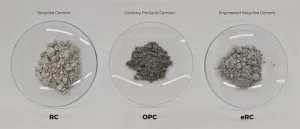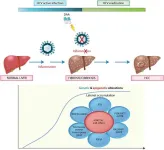Type 2 diabetes mellitus (T2DM) is a chronic metabolic disorder with a rapidly increasing global prevalence. It is primarily characterized by insulin resistance, β-cell dysfunction, and impaired glucose homeostasis. Emerging research suggests that flavonoids, a diverse group of plant-derived polyphenols, may offer therapeutic potential in managing T2DM. These compounds exert antidiabetic effects through multiple mechanisms, including improving insulin sensitivity, enhancing β-cell function, modulating the gut microbiota, inhibiting gluconeogenesis, and regulating enteroendocrine hormones. This review explores the role of flavonoids in T2DM treatment, with a particular focus on their impact on the enteroendocrine system.
Flavonoids: Classification, Absorption, and Metabolism
Flavonoids are categorized into several subclasses based on their chemical structure, including flavonols, flavanones, flavones, flavan-3-ols, isoflavones, and anthocyanins. These compounds are abundant in fruits, vegetables, tea, and medicinal plants. Upon ingestion, flavonoids undergo extensive metabolism, involving hydrolysis, microbial degradation, and biotransformation in the liver. The bioavailability of flavonoids is influenced by their glycosylation, food matrix composition, and interaction with gut microbiota. Studies indicate that specific flavonoids, such as quercetin, anthocyanins, and epigallocatechin gallate (EGCG), are efficiently absorbed and exert beneficial metabolic effects.
Mechanisms of Flavonoid Action in T2DM
Improving Insulin Sensitivity and Secretion
Flavonoids enhance insulin signaling pathways by increasing phosphorylation of insulin receptor substrate-1 (IRS-1) and activating AMP-activated protein kinase (AMPK). Certain flavonoids, such as cyanidin-3-O-glucoside, have been shown to improve glucose uptake in adipocytes and skeletal muscle cells. Additionally, flavonoids stimulate insulin secretion by promoting pancreatic β-cell function and reducing oxidative stress-induced β-cell apoptosis.
Modulating Glucose Metabolism and Gluconeogenesis
Flavonoids inhibit key enzymes involved in hepatic glucose production, such as glucose-6-phosphatase and phosphoenolpyruvate carboxykinase (PEPCK). Baicalin and epicatechin suppress gluconeogenesis via the PI3K/Akt and AMPK pathways, thereby reducing hepatic glucose output. Additionally, flavonoids regulate glucose transporter expression, facilitating glucose uptake in peripheral tissues.
Regulating Gut Microbiota
The gut microbiota plays a critical role in glucose metabolism and T2DM pathophysiology. Flavonoids promote gut microbiome diversity and enhance the growth of beneficial bacteria while suppressing pathogenic microbes. They influence microbial-derived metabolites, such as short-chain fatty acids (SCFAs), which improve insulin sensitivity and modulate gut hormone secretion.
Flavonoids and the Enteroendocrine System
The enteroendocrine system, composed of hormone-secreting intestinal cells, regulates glucose homeostasis through various peptides, including glucagon-like peptide-1 (GLP-1), glucose-dependent insulinotropic polypeptide (GIP), peptide YY (PYY), and cholecystokinin (CCK). Flavonoids have been found to influence the secretion and activity of these hormones, contributing to improved glycemic control.
GLP-1 and GIP Regulation
GLP-1 and GIP are incretin hormones that stimulate insulin secretion and inhibit glucagon release. Several flavonoids, such as quercetin and hesperidin, enhance GLP-1 secretion from L-cells, thereby prolonging incretin action. Furthermore, flavonoids inhibit dipeptidyl peptidase-4 (DPP-4), the enzyme responsible for incretin degradation, leading to sustained incretin activity and improved insulinotropic effects.
Influence on PYY and CCK
Flavonoids regulate satiety-related gut hormones, such as PYY and CCK, which contribute to appetite control and weight management in T2DM. Procyanidins and epicatechins have been shown to enhance PYY secretion, leading to reduced food intake and improved metabolic outcomes. Additionally, flavonoids like catechin and resveratrol modulate CCK secretion, which plays a role in slowing gastric emptying and improving postprandial glucose levels.
Therapeutic Potential and Future Directions
The therapeutic application of flavonoids in T2DM management is promising, yet challenges remain regarding their bioavailability, dosage optimization, and long-term efficacy. Future research should focus on clinical trials evaluating the effectiveness of specific flavonoids in T2DM treatment. Additionally, the development of novel flavonoid-based formulations, including nanoparticles and encapsulated supplements, may enhance their stability and absorption. Investigating the synergistic effects of flavonoids with existing antidiabetic medications could further expand their clinical utility.
Conclusion
Flavonoids represent a promising class of natural compounds with potential benefits in T2DM treatment through their effects on insulin sensitivity, glucose metabolism, gut microbiota, and enteroendocrine hormone regulation. Their ability to modulate GLP-1, GIP, PYY, and CCK secretion highlights their relevance in metabolic health. While further studies are needed to elucidate optimal dosages and clinical applications, flavonoids offer a promising adjunctive strategy for managing T2DM and improving overall metabolic health.
Full text:
https://www.xiahepublishing.com/2472-0712/ERHM-2024-00055
The study was recently published in the Exploratory Research and Hypothesis in Medicine.
Exploratory Research and Hypothesis in Medicine (ERHM) publishes original exploratory research articles and state-of-the-art reviews that focus on novel findings and the most recent scientific advances that support new hypotheses in medicine. The journal accepts a wide range of topics, including innovative diagnostic and therapeutic modalities as well as insightful theories related to the practice of medicine. The exploratory research published in ERHM does not necessarily need to be comprehensive and conclusive, but the study design must be solid, the methodologies must be reliable, the results must be true, and the hypothesis must be rational and justifiable with evidence.
Follow us on X: @xiahepublishing
Follow us on LinkedIn: Xia & He Publishing Inc.
END





